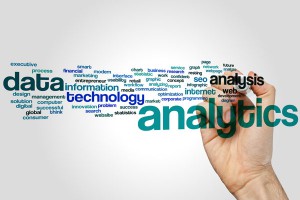 Organizations keep generating more and more data. You’d think they’d learn something from all this information. But data analytics are pretty tough when few of the people with access to that data know what to do with any of it. For any hope of gaining insight from this information, they need to achieve data literacy.
Organizations keep generating more and more data. You’d think they’d learn something from all this information. But data analytics are pretty tough when few of the people with access to that data know what to do with any of it. For any hope of gaining insight from this information, they need to achieve data literacy.
TechTarget defines data literacy as the ability to derive meaningful information from data. But just how do you teach your staff?
First, take stock of what skills power literacy. A business intelligence end user must:
- Know what data to use for each purpose;
- Interpret data visualizations;
- Understand analytics tools and methods, and how and where to use them;
- Recognize misuse of data;
- Know how to share information and insight to people lacking data literacy
Journalists delve into data these days to report on government budgets, health risks, crime trends and other public issues. Media organizations need data literate workers just like any business. Data journalists advocates created a Data Journalism Handbook that works just as well with any organization to educate end users about data literacy. For those budget conscious individuals, note that the book falls under the Creative Commons Attribution-ShareAlike license, so it can be freely copied, redistributed and reused under those terms.
Check out the “Become Data Literate in 3 Steps” chapter. The skills needed for data literacy boil down to these three questions:
- How was the data collected?
- What’s in there to learn?
- How reliable is the information?
Any organization prefers that all employees become data literate. Even with self-service business intelligence and analytics solutions, that might be too optimistic. First, find the people with the potential to learn new BI techniques. Train them to build a foundation of data literacy. Make these people data leaders to foster data literacy across the organization.
In a webcast recorded for SearchBusinessAnalytics, consultant William McKnight said, “Your data has a story to tell.” McKnight said that you need to know what a particular piece or set of data really shows to choose the appropriate type of visualization for it.
And as many of my early teachers told me, “if you can’t explain it, you don’t understand it.”
Fostering data literacy among employees fails without creating a data-driven culture at your organization. Kari Rippetoe of Journyx suggests establishing your company’s metrics for success as you start to create this culture.
“If you know what you’re measuring (whether that’s sales, marketing, IT, financial/accounting, or operational success), then you can determine how you can collect your data, which is the next step,” Rippetoe said in an article on creating a data-driven culture.
Follow Izenda on social media for the latest on technology and business intelligence:
![]()
![]()
![]()

